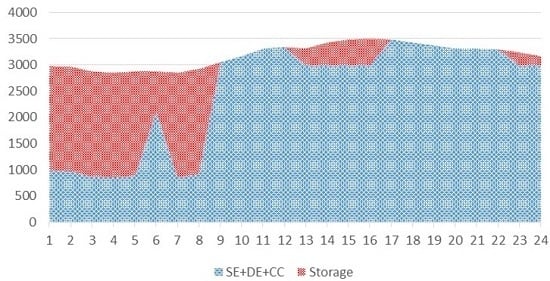Optimal Cooling Load Sharing Strategies for Different Types of Absorption Chillers in Trigeneration Plants
Abstract
Share and Cite
Conte, B.; Bruno, J.C.; Coronas, A. Optimal Cooling Load Sharing Strategies for Different Types of Absorption Chillers in Trigeneration Plants. Energies 2016, 9, 573. https://doi.org/10.3390/en9080573
Conte B, Bruno JC, Coronas A. Optimal Cooling Load Sharing Strategies for Different Types of Absorption Chillers in Trigeneration Plants. Energies. 2016; 9(8):573. https://doi.org/10.3390/en9080573
Chicago/Turabian StyleConte, Benedetto, Joan Carles Bruno, and Alberto Coronas. 2016. "Optimal Cooling Load Sharing Strategies for Different Types of Absorption Chillers in Trigeneration Plants" Energies 9, no. 8: 573. https://doi.org/10.3390/en9080573
APA StyleConte, B., Bruno, J. C., & Coronas, A. (2016). Optimal Cooling Load Sharing Strategies for Different Types of Absorption Chillers in Trigeneration Plants. Energies, 9(8), 573. https://doi.org/10.3390/en9080573








